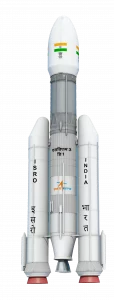ForumIAS announcing GS Foundation Program for UPSC CSE 2025-26 from 27th May. Click Here for more information.
Source-This post on GSLV rocket nicknamed ‘naughty boy’ has been created based on the article “ISRO’s latest launch: Why is the GSLV rocket nicknamed ‘naughty boy’?” published in “The Indian Express” on 19 February 2024.
Why in the news?
The Indian Space Research Organisation’s meteorological satellite, INSAT-3DS, was successfully placed into its intended orbit by Geosynchronous Launch Vehicle F14 (GSLV-F14). GSLV rocket has been nicknamed as ‘naughty boy’.
About Geosynchronous Satellite Launch Vehicle (GSLV)

Introduction -GSLV is a space launch vehicle designed, developed, and operated by the Indian Space Research Organisation (ISRO) to launch satellites and other space objects into Geosynchronous Transfer Orbits.
Objective– GSLV has been designed for launching communication satellites.
Direction of launch– Geosynchronous satellites are launched into orbit in the same direction of Earth’s spin and can have any inclination. The satellites in the geosynchronous orbits appear to remain permanently fixed in the same position in the sky.
Capacity– GSLV has the capability to put a heavier payload in orbit than the Polar Satellite Launch Vehicle (PSLV).
Number of stages– It is a three-stage launcher with strap-on motors.
Why is the GSLV rocket called ‘naughty boy’?
It has been nicknamed as naughty boy due to its high rate of failure, compared to other rockets. 4 out of 15 previous launches with this rocket have been unsuccessful.
On the other hand, PSLV rocket, the rocket that ISRO has used the maximum number of times, has failed only twice in its 60 launches. The LVM3 rocket has flown seven times and has never failed.
What are problems with GSLV?
The problems have mainly been with the cryogenic engine that powers the third and final stage of the flight. The GSLV uses a cryogenic engine, that has been reverse-engineered on a Russian design. The need for reverse-engineering arose due to Russia’s inability to transfer cryogenic technology because of USA’s stiff opposition.
It is this reverse-engineered cryogenic engine, used in the GSLV rockets, that has led to failures of the missions in the recent past.
Read more about-Cryogenic Engine.
UPSC Syllabus-Science & technology.




